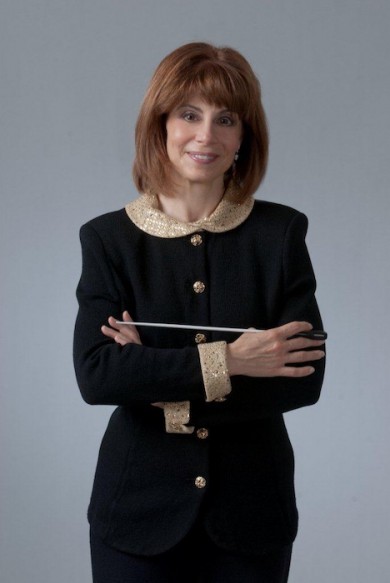Falletta, Buffalo Philharmonic close Kravis classical season in style

JoAnn Falletta conducted the Buffalo Philharmonic Orchestra Monday night at the Kravis Center in West Palm Beach.
JoAnn Falletta is marking her 20th season as music director of the Buffalo Philharmonic Orchestra, and she is widely credited for raising the ensemble’s identity through more than a hundred recordings, radio broadcasts and tours.
The BPO has performed at the Kravis Center several times in recent years., and Monday night Falletta and the orchestra returned to Dreyfoos Concert Hall for a program of Borodin, Brahms and Prokofiev.
For most of its eighty-four year history the Buffalo Philharmonic has taken its place among the nation’s solid, regional orchestras. However, on the basis of their Kravis performance, the BPO has probably ascended to the second tier. The violins are articulate if austere in tone. The lower strings are warmer. Woodwinds and brass seem the most secure sections overall, and are well blended throughout.
The Overture to Borodin’s Prince Igor has been overshadowed in recent decades by the Polovtsian Dances from that opera. Were it not for Alexander Glazunov’s memory of the composer’s own piano performance, the overture might not exist at all since Borodin never wrote it down; Glazunov’s completion is a colorfully scored pastiche, effectively setting many familiar melodies from the opera. The curtain-raiser was affectionately played with a creamy clarinet solo by William Ansel and lovely cello tone in Igor’s aria.
Brahms’s Piano Concerto No. 2, completed in 1881, was described by the composer as “a tiny, tiny piano concerto with a tiny, tiny wisp of a scherzo.” That was Brahms’s little joke, as the work is one of the more massive examples of the genre, often dubbed “a symphony with piano obbligato.”
Fabio Bidini, a finalist at the 1993 Van Cliburn Competition, played engagingly but without much muscle. Instead, it was a graceful account if a rather cool one, that emphasized clarity and crisp articulation in passagework. That made the chamber music-like textures of the Concerto’s last two movements especially successful. Bidini played with communicative impulse except when he indulged in a few unwelcome ritards and agogic distortions. The beautifully secure horn playing of Jacek Muzyk and the expressive cello solo in the Andante by Roman Mekinulov were welcome adornments.
A suite of nine items from Serge Prokofiev’s ballet Romeo and Juliet was heard after intermission. To the seven excerpts that comprise the familiar Suite No. 2 (Op. 64ter) were added “Masks” and the “The Death of Tybalt” from the Suite No. 1 (Op. 64bis)
The powerfully persuasive and polished performance suggested careful rehearsal. The heavy tread of “Montagues and Capulets” was followed by the bounding energy of “Juliet the Maiden.” “The Death of Tybalt, with its furiously unyielding measures, was preceded by the lush “Romeo and Juliet Before Parting.” These sections, and others, were a showcase for the BPO’s low brass and winds, as well as allowing the violas and cellos to emerge with attractive prominence. Salvatore Andolina’s saxophone solos were notable for their elegant phrasing and tonal suavity. The high strings were not neglected, however, and the delicacy of their playing in the final measures of “Romeo at Juliet’s Tomb” was affecting as the sound gradually died away.
Dennis D. Rooney has written music reviews for over fifty years. A regular contributor of reviews and features for The Strad since 1984, he is also an occasional contributor to American Record Guide and musicalamerica.com. A resident of Delray Beach, his reviews of South Florida concerts regularly appear in the Palm Beach Daily News and palmbeachartspaper.com.
Posted in Performances
Leave a Comment
Tue Apr 2, 2019
at 4:56 pm
No Comments







